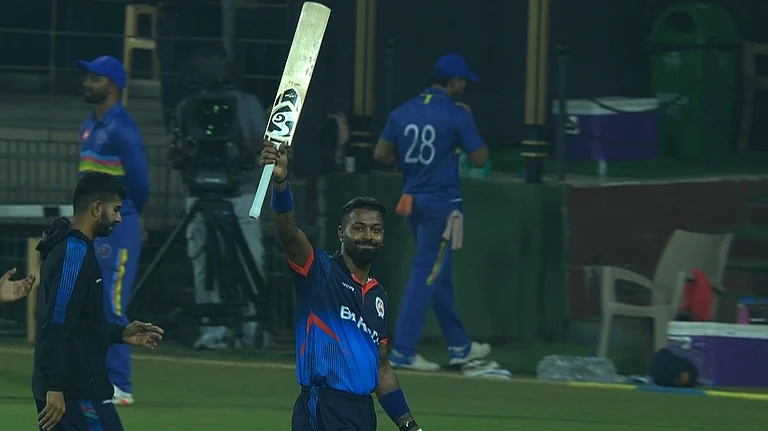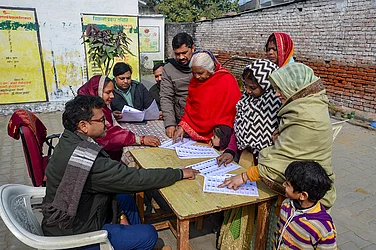Hindi and Urdu authors have put a lot of energy into looking at communal fault lines. And I think that they have continuously been inspired by ongoing clashes and problems within Indian society. For example, Bhisham Sahni wrote Tamas because of current events. He wrote it 25 years or so after the Partition, but he wrote it because he realised that Partition was still happening, in a sense. So, a lot of times you will see this continual refocusing on Partition because people see it as an ongoing process.
But caste, I think, has been much more poorly addressed. Obviously because most famous authors were from upper castes (Savarna), who perhaps did not have enough awareness. For instance, Upendranath Ashk puts a lot of emphasis on clashes within his mohalla, between Khatris and Brahmins, which have been going on for centuries. He’s very interested in that kind of microcosm, but he doesn’t address Dalit issues at all. And I have not seen many others who aren’t Dalit themselves addressing these issues.
Back in the mid-20th century, progressivism was in complete control of all the Indian language literatures. This was true when authors like Premchand were writing, but is certainly not the case now. So, probably, there are plenty of reactionary authors in Hindi nowadays who are not addressing these problems. But there are authors like Uday Prakash who talk about contemporary issues related to caste and class. His The Girl With the Golden Parasol is about caste issues, and demonstrates the fact that the progressive tradition is still strong, although it’s obviously not as strong as it used to be. So some are writing about these issues, but they are not being addressed as much as they should be.

The gender question
One thing I find is that in books written by men, women don’t say much and don’t show up much either. In Shahar Mein Ghumta Aaina by Ashk, which I translated, there’s an intercaste dispute, and a woman character who has secretly married somebody from a different caste, herself becomes a battleground between the two castes. She’s publicly beaten and left bleeding and prostrate in the public square. People put her on a charpoy and then decide to carry her through the neighbourhood to the police station. No medical treatment is discussed. She is never asked how she feels. To me, this scene was a metaphor for how women are treated in general, and how women characters are treated in fiction. Often, even a very sensitive and aware man will not think about what women might be thinking.
ALSO READ: Paradox And Dilemma Of UP's Hindi Literati
Women writers don’t leave men out; instead, they sensitively portray what the men are feeling and give them plenty of lines. When you read only books by women, you start to realise how much of women’s consciousness is left out of literature. I love translating women’s work, because it allows me to go slowly and deeply into experiences and thought processes that we are in some ways not even used to thinking about, not just in India but also in America and all around the world. Our societies are patriarchal for the most part and we become accustomed to simply hearing male perspectives and just don’t think about it.
Another example is the Hindi novel Raag Darbari by Shrilal Shukla. There are no female characters in it, except for one that you never even see. You can hear her voice, but she never appears. I have read a lot of Shukla’s work, and he has many interesting female characters in his other books. I don’t think it is evidence that he is a huge misogynist. But I think men in Indian society, especially in certain segments, face an enormous amount of gender segregation, and so they simply don’t see women very much, or talk to them much. So that’s why they don’t really know what women are thinking.
This leads to another phenomenon, which is the way in which men go out and women stay in, which you see in Khadija Mastoor’s The Women’s Courtyard. In this novel, all the women stay inside, which is where all the action is, while the men come and go and get involved in politics. And so I think with male writing, you see so much more of the outside world. And this particular point is very specific to South Asia.

The depiction of politics in male novels is all about exterior interactions, things that are happening outside of homes: there will be riots or political rallies or campaigning or people running around shouting slogans. But women writers see what filters inside to the women’s quarters and how what’s going on politically outside affects the lives of women living inside. That is a really interesting feature of a lot of South Asian writing. Obviously, things are a bit different now. In Indian cities, you see women out and about, but often they are in motion—on a three-wheeler or walking swiftly looking in a particular direction, while men are free to loiter. We see this reality reflected in literature as well.
ALSO READ: And Unquiet Flows The Yamuna
Formal change
Hindi literature has always been experimental. It gained a life of its own when it broke off from Urdu. Urdu literature is not particularly experimental: there are set ways to use certain words and it’s more standardised. But from the beginning, Hindi authors have been trying to reach out and include all different regions, reaching out for regional vocabularies. They are not writing in Bhojpuri or Rajasthani, but bringing in regional flavours from these and many more languages. Take Agyeya for example. He used a great deal of Sanskrit vocabulary and even made up many words.
Krishna Sobti is famous for bringing Punjabi inflections to her writing. I once asked her, “Why didn’t you write in Punjabi?” She replied, “I don’t know Punjabi.” Obviously, she knew Punjabi, but she probably meant literary Punjabi. So this kind of borrowing and experimentation is a tradition. Ashk is another good example. A Punjabi by birth, he was also an Urdu poet. So you see lots of experimentation in his work, as he tries to understand shuddh Hindi vocabulary.
ALSO READ: The Decline Of Urdu In UP's Literary World
With her own experiments, Geetanjali Shree is taking part in that same tradition. She’s being traditional, but she has her own way of doing it. So really, I think there’s a big difference between Hindi and Urdu in that sense, but both contemporary and older Hindi literary works are difficult to translate because there are many words that authors make up or take from other languages that are not in dictionaries, and have idiosyncratic usages and meanings. In many instances, even if I asked you as a native speaker the meaning of a word, you, too, wouldn’t have any idea. The reader has to interpret how the author is using the language, but the translator has to nail it down precisely, which makes it much harder.
New middle class
With the Nayi Kahani literary movement led by authors like Kamleshwar, Nirmal Verma, Rajendra Yadav, Mohan Rakesh and Mannu Bhandari, among others, there was a lot of emphasis on the breakdown of joint families and people living in urban settings, a concept often referred to as alagaav (alienation). It may be that these writers thought the joint family would completely evaporate as young people started living alone in cities and moving away from their families. But in the end, joint families didn’t evaporate. They still exist. Nowadays, many young people go and live in cities by themselves and have jobs, and it’s not considered all that depressing, though of course they have new challenges.
The Nayi Kahani movement was interested in this phenomenon of alienation, as in the great novel Andhere Bandh Kamre by Mohan Rakesh, which is the ultimate example of this phenomenon, or Pachpan Khambe Lal Deewarein by Usha Priyamvada, which is its feminist version.
(Views expressed are personal)
ALSO READ
Daisy Rockwell is a US-based writer, artist and translator of Hindi and Urdu literature





















